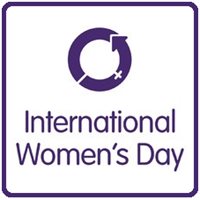
Sunday 8 March sees the 107th celebration of International Women’s Day (IWD). It’s a longer history than is often supposed and also a more socialist one. There were conspicuous exceptions, but the West as a whole didn’t really latch on to it until, following International Women’s Year in 1975, the UN proclaimed 8 March as the UN Day for Women's Rights and International Peace and started increasingly to badge and orchestrate it.
That’s fine for countries where it’s a public holiday, and for those not celebrating Mother’s Day until early May. We, though, link that American creation to Mothering Sunday and the traditional Christian practice of visiting one’s mother church on the fourth Sunday in Lent (15 March this year). There’s the risk, therefore, particularly when you throw in Valentine’s Day, of IWD morphing into another of those fluffy Spring days when women get a bit of a day off, like domestic servants of yore, and maybe a meal out.
So I was impressed to see on the IWD website that, of the 1,000+ registered IWD ‘events’, the UK is contributing almost twice the number of any other single country. They’re not all happening this weekend; indeed, in the date-ordered listing, the first actual IWD event is on page 17 – ‘A Gathering of Goddesses, celebrating ourselves, all women and Mother Earth’ at The Hurlers stone circles in Cornwall.
Sadly, one thing the Goddesses won’t be celebrating is this country’s narrowing gender gap – because it isn’t. In the past decade, according to the best comparative data available, the UK’s overall gender gap hasn’t closed at all in absolute terms. Judged alongside some 120 other countries, the relative gap has widened, as it has on all major sub-indexes, on some of which it has widened absolutely.
The measuring instrument is the World Economic Forum’s Global Gender Gap (GGG) Index, the 2014 report of which is its ninth annual edition. Being an index, its principal interest is in the gaps between men and women in four main categories (sub-indexes). Economic Participation and Opportunity records labour force participation rates, remuneration, and career advancement. Educational Attainment is about access to primary, secondary and tertiary education. Health and Survival combines sex ratios at birth – to capture internationally the phenomenon of ‘missing women’ – and healthy life expectancy. Political Empowerment compares the ratios of men and women in ministerial and parliamentary positions.
And the UK’s embarrassment, particularly on International Women’s Day, is that since 2006 our overall gender gap hasn’t closed by a single percentage point. Seventy-four per cent of the gap was closed in 2006, and in 2014 it was still 74%. Meanwhile, our ranking has dropped from ninth to 26th, adrift of a mélange of countries including Nicaragua, Rwanda, the Philippines, Latvia, Burundi, Bulgaria, Slovenia and Moldova.
There’s not much to celebrate in any of the indexes, but Political Empowerment is particularly gloomy, our ranking having plummeted from 12th in 2006 to 33rd and the gender gap widening in real terms. As we approach the election, our ratios of women in parliament and in ministerial positions – with 1.0 representing complete equality and 0 inequality – are 0.29 and 0.19 respectively. These compare, for instance, to Denmark – 0.64, 0.83; Finland – 0.74, 1.0; South Africa – 0.81, 0.59; and Rwanda – 1.0, 0.65.
The best that can be said is that at least the bar for the next lot to try to jump is set pretty low.
Chris Game, Honorary Senior Lecturer, Institute of Local Government Studies, University of Birmingham